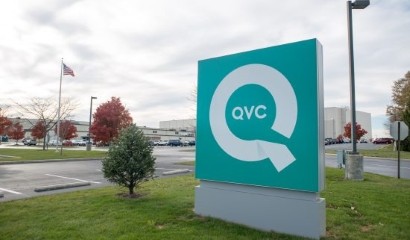Nishan Srinivasan, Partner and Head of Origination at Ambienta Credit, on trends in mid-market credit
In an exclusive return to the ION Influencers Fireside Chats, Nishan Srinivasan, Partner and Head of Origination at Ambienta Credit, provided a masterclass on the evolving landscape of European private credit. With three decades of experience spanning high yield booms to the rise of direct lending, Srinivasan offered invaluable insights for LPs, GPs, and founders navigating the competitive mid-market.
Here are the key topics and takeaways from their compelling discussion.
1. The Unstoppable Rise of Private Credit
Srinivasan positioned private credit not as a fleeting trend but as a “major, major source of financing” that is now fundamental to the global economy. He traced its origins to filling the gap left by banks and public markets for mid-market companies ($20M-$50M EBITDA) and confirmed this demand is only growing. Despite an influx of capital, he expressed “no real concerns” about the market becoming too crowded, emphasizing that innovation and company growth will continue to drive deal flow.
2. The Mid-Market Advantage: Structure and Relationships
A central theme was the stark contrast between the large-cap and mid-market segments. Srinivasan argued that the upper mid-market has drifted toward covenant-lite structures akin to syndicated loans. The true value of private credit, he contends, remains in the core mid-market, where lenders can still secure maintenance covenants and, most importantly, act as a sole or major lender. This fosters a close, partnership-based relationship with borrowers—a key differentiator from the “faceless” nature of the broadly syndicated loan market.
3. The Next Frontier: Sponsorless Deals
The conversation turned to the hot topic of sponsorless (or non-sponsored) deals. While acknowledging everyone’s interest, Srinivasan was candid about the challenges:
-
Difficulty in Sourcing: Finding high-quality, founder-led businesses requires “shoe leather” and deep relationship-building, not just covering private equity sponsors.
-
Intensive Diligence: These deals often lack polished vendor reports, requiring more time and effort from the lender—some take 6 to 12 months to complete.
Despite this, he believes the sponsorless market is poised for significant growth, driven by competition in the sponsored market and a desire for outsized returns. Education is key to helping founders understand that private credit can be a tool for transformative growth without giving up equity.
4. The Authentic ESG Advantage
In a climate of ESG skepticism, Srinivasan presented Ambienta’s science-based approach as a key differentiator and a source of alpha.
-
Beyond Buzzwords: Their strategy is not about labels but identifying companies where sustainability is a genuine growth driver. The thesis is that these businesses will “outperform their peers.”
-
Science-Based Metrics: A team of 13+ engineers analyzes investments based on hard metrics like CO2 emissions saved, pollutants avoided, and landfill reduction. This moves beyond “fluffy” ESG to measurable impact and de-risking.
-
A Deal Origination Tool: This authentic sustainability angle provides a “profound” talking point to build rapport with companies in their niche, making them a partner of choice beyond just capital.
5. The Future of Private Credit: Specialization and Diligence
Looking ahead, Srinivasan predicted a market split:
-
Behemoths: Large, generalist firms with internal sector specialties.
-
Specialists: Smaller funds focused on niches like sustainability, specific sectors, or geographies.
He argued that mid-sized generalist funds without a clear edge may struggle as LPs and borrowers seek differentiated value propositions. Regardless of size, he emphasized there are “no shortcuts”—thorough, private equity-style due diligence remains non-negotiable for success and portfolio resilience.
6. Macro Outlook and LP Sentiment
On the macro environment, Srinivasan remains bullish on the core value proposition of private credit: delivering high-single-digit, reliable returns with cash yield to investors. He noted that while LPs are increasingly discerning, demand for strategies that combine this yield with genuine ESG-driven alpha remains strong. He expects rates to drift down gently, making debt more affordable for companies, but believes credit selection based on strong cash flows will always trump interest rate speculation.
The Bottom Line: The European mid-market private credit space is maturing but far from saturated. The winners will be those who combine rigorous credit fundamentals with a true specialty—whether through deep sponsor relationships, a focus on the underserved sponsorless segment, or a authentic, metrics-driven ESG approach that identifies tomorrow’s outperformers.
Key timestamps:
00:07 Introduction to the Fireside Chats
01:28 Market Evolution in Private Credit
03:24 The Vibrancy of the Mid-Market
05:51 The Growth of the Sponsorless Market
08:08 Origination Strategies for Private Credit
11:05 Partnerships Between Banks and Private Credit Providers
12:38 Sustainability in Private Credit
15:49 The Importance of Science-Based Metrics
17:32 Balancing Sustainability and Credit Expertise
19:03 Impact of Due Diligence on Deal Flow
20:29 Developing Team Expertise in Private Credit
22:25 The Future of Generalist vs. Specialist Funds
24:10 LPs’ Concerns Amid Macro Factors
26:14 Interest Rate Predictions and Investment Strategies
28:14 The Role of Flex Equity in Investment Growth











